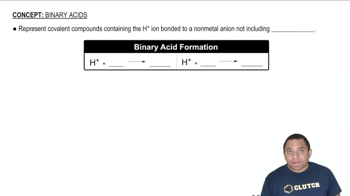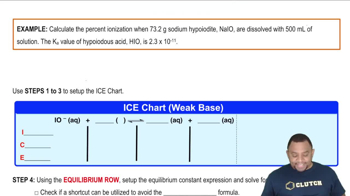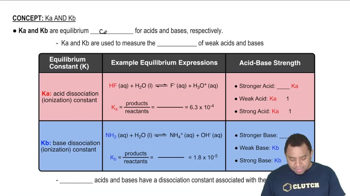Here are the essential concepts you must grasp in order to answer the question correctly.
Monoprotic Acid
A monoprotic acid is an acid that can donate only one proton (H+) per molecule during the ionization process. This characteristic simplifies the calculation of its ionization in solution, as it only involves the dissociation of a single hydrogen ion. Common examples include acetic acid and hydrochloric acid.
Recommended video:
Percent Ionization
Percent ionization is a measure of the extent to which an acid dissociates in solution, expressed as a percentage. It is calculated by dividing the concentration of ionized acid by the initial concentration of the acid, then multiplying by 100. This concept helps in understanding the strength of the acid; a higher percent ionization indicates a stronger acid.
Recommended video:
Percent Ionization Example
Acid Ionization Constant (Ka)
The acid ionization constant (Ka) quantifies the strength of an acid in solution, representing the equilibrium constant for the dissociation of the acid into its ions. It is calculated using the concentrations of the products and reactants at equilibrium. A larger Ka value indicates a stronger acid, as it implies a greater degree of ionization.
Recommended video:
Characteristics of Ka and Kb

 Verified step by step guidance
Verified step by step guidance

